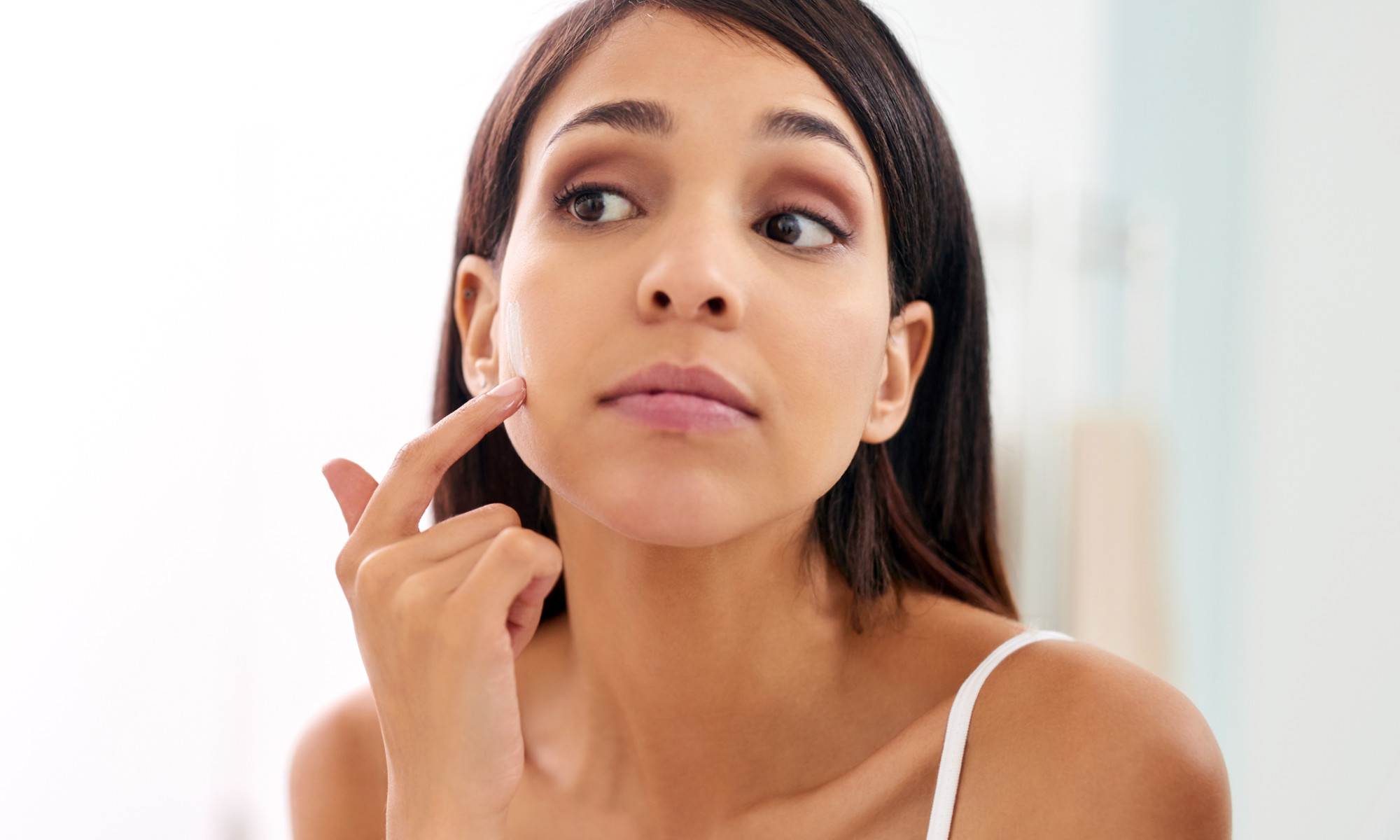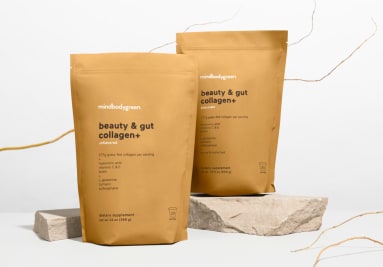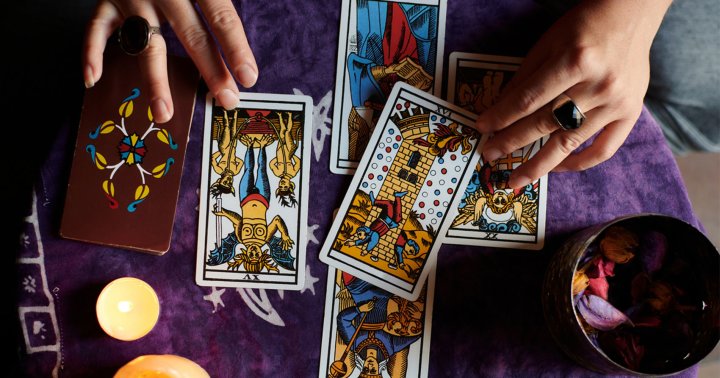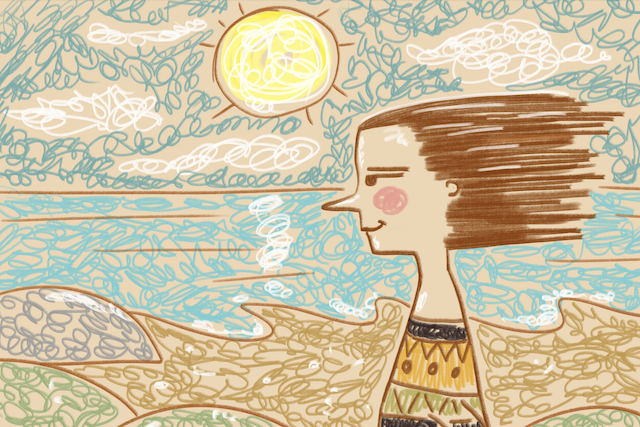What Products To Avoid (And How To Heal) During A Retinol Purge
Don't worry, the purge won't last forever.


mbg Assistant Beauty Editor
mbg Assistant Beauty Editor
Hannah Frye is the Assistant Beauty Editor at mindbodygreen. She has a B.S. in journalism and a minor in women’s, gender, and queer studies from California Polytechnic State University, San Luis Obispo. Hannah has written across lifestyle sections including health, wellness, sustainability, personal development, and more.
Image by PeopleImages / iStock February 23, 2023 Our editors have independently chosen the products listed on this page. If you purchase something mentioned in this article, we may If you ask dermatologists what their must-have skin care products are, chances are a great majority of them will have retinol on the list. Whether you’re looking to treat breakouts, ease signs of skin aging, or encourage healthier skin overall, retinol is a multi-faceted winner. However, these benefits come with a catch: The chance of a retinol purge. But, it’s not always easy to tell the difference between a retinol purge and an everyday breakout—so here’s a helpful guide to differentiate the two. 
Advertisement
This ad is displayed using third party content and we do not control its accessibility features.
What is the difference between a skin purge and a breakout?
The difference.
It would be convenient if retinol purge breakouts and typical acne looked starkly different, but that’s not really the case—instead, the reason behind the breakout is what makes the retinol purge unique.
A typical pimple pops up due to a combination of oil (formally known as sebum), bacteria, dead skin, hormone fluctuations, etc.—however, a retinol purge happens because your skin is in the process of clearing up—which can be hard to believe when you’re in the middle of the breakout.
"Skin purging is a process where blockages within your pores are brought to the surface all at once," says board-certified dermatologist Joshua Zeichner, M.D. Think of it like a going-out-of-business sale for your zits.
However, it’s completely normal to have an even worse breakout during this retinol purge period than you usually would. What’s more, even people who have never experienced acne may see pimples popping up after starting retinol.
Advertisement
This ad is displayed using third party content and we do not control its accessibility features.
Signs your skin is purging.
Let’s keep it simple—use the following signs as a checklist to see if your skin is in purge mode. If none of these apply, it may be a typical breakout (but more on that in the next section).
Advertisement
This ad is displayed using third party content and we do not control its accessibility features.
Signs it's a breakout.
Now if you’re still unsure, it might be an unrelated breakout. Most sudden breakouts that aren’t due to retinol can be attributed to other pore-clogging products, hormonal fluctuations, and general acne triggers. To follow, a few signs it’s an average breakout:
Advertisement
This ad is displayed using third party content and we do not control its accessibility features.
How to treat skin purging vs a breakout.
Now that you have a clue as to whether or not your skin is purging, let’s get into treatment options. The methods for clearing typical breakouts and purging breakouts are very different, so keep the following tips in mind.
How to treat purging.
Listen closely: When your skin starts breaking out from a new retinol product, don’t jump to more actives to treat it. If you toss benzoyl peroxide, AHAs, BHAs, and scrubs onto your new breakout, it will only increase irritation because your skin is more sensitive at this time. Instead, follow these tips:
Advertisement
This ad is displayed using third party content and we do not control its accessibility features.
How to treat a breakout.
Different kinds of pimples call for different types of treatment. Keep the following protocol in mind if you’re dealing with a sudden breakout that’s not retinol-induced:
FAQ
What does skin purging look like?
Skin purging typically looks like more pimples of a similar variety than you were already experiencing—meaning those prone to whiteheads may get more whiteheads, those prone to cystic pimples may get more cysts, etc. However, those who have never experienced acne may also see some breakouts form when starting retinol treatments.
Does skin purging look like tiny bumps?
Skin purging can look like tiny bumps, which are clogged pores. When you start a new retinol treatment, your skin brings the dead skin and underlying pore clogs to the surface at a quicker rate, resulting in more breakouts at once. But don't worry, the retinol purge doesn't last forever.
How long is the acne purging phase?
The retinol purge can last anywhere from a few weeks to two months. This will be different for each person and you shouldn't give up on retinol if your acne hasn't cleared by the end of two months, as some people take longer to adjust to the new treatment.
Purging vs. irritation?
Purging will look like an increase in breakouts, while irritation may also include redness, sensitivity to even gentle skin care products, and may also include itch.
What to do while skin is purging?
If you're experiencing a retinol purge, don't start using more actives. Stay away from AHAs, BHAs, and physical exfoliants for now, as the retinol will make your skin more sensitive to those potent ingredients. Instead, work on keeping your skin hydrated, space out the evenings you use retinol, and work on decreasing inflammation.
How do you calm down skin purging?
You can calm down skin purging by spacing out how often you use your retinol treatment if you haven't already. When you first start out, use retinol once or twice a week and gradually increase the use if your skin can tolerate it. In addition, use hydrating, soothing ingredients like hyaluronic acid, ceramides, aloe vera, calendula, and panthenol in your other skin care products. The key is to limit your exposure to AHAs, BHAs, fragrances, and physical scrubs while your skin is adjusting to the retinol.
The takeaway.
Retinol is a fantastic ingredient with plenty of worthy benefits, including its ability to treat many kinds of acne. However, your skin may begin to purge when you first start using retinol or transition to a stronger product, resulting in more breakouts than usual. If this happens, don’t immediately start using harsh actives—instead, work on soothing the skin, hydrating your skin barrier, and spacing out your retinol treatment nights if need be. Want to learn more about retinol and acne? Take a look at this guide.
Want to turn your passion for wellbeing into a fulfilling career? Become a Certified Health Coach! Learn more here.

 Lynk
Lynk 






























